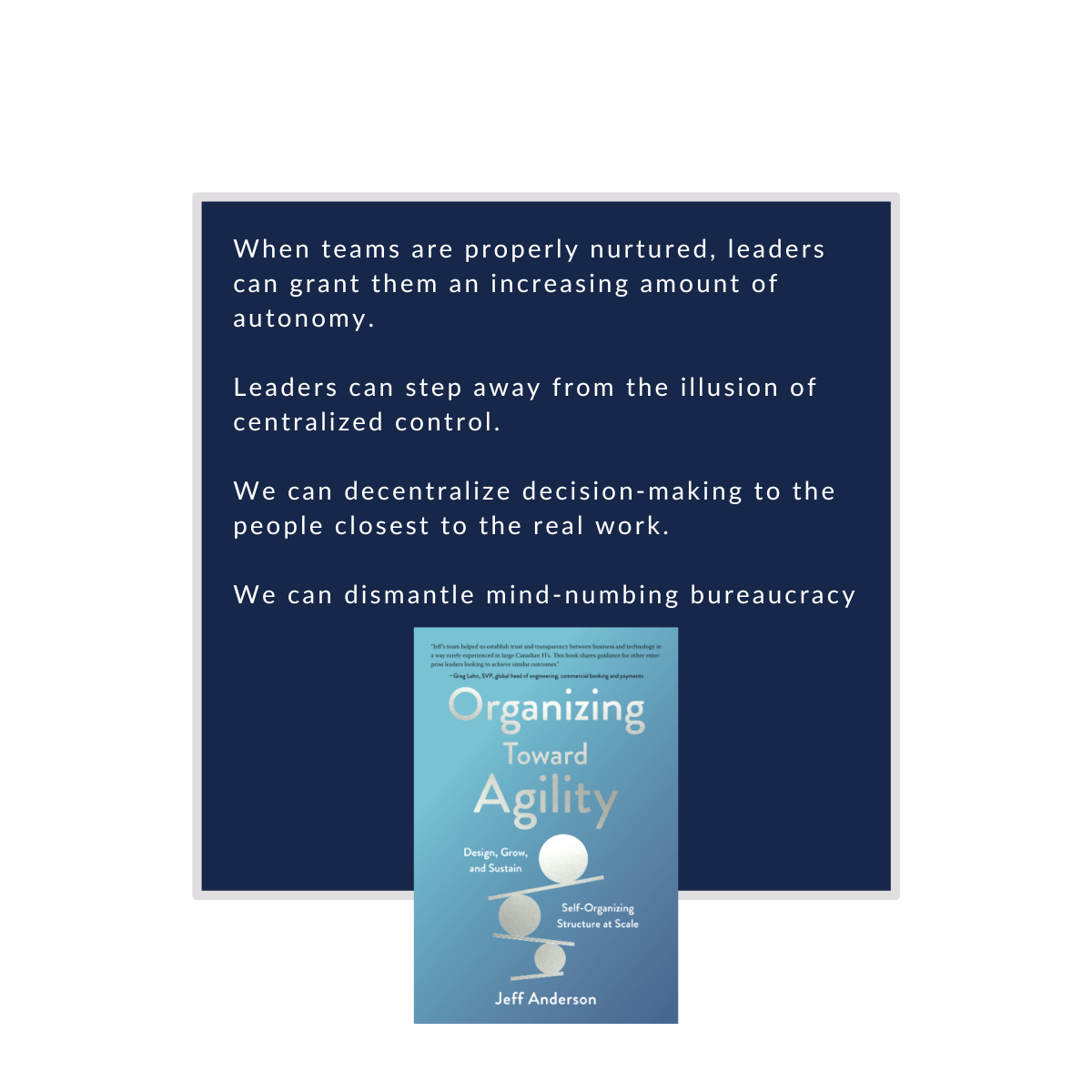
Answers to FAQ's to Get You Started

Working with teams, speaking about agility and helping organizations put it into practice is what I am most passionate about.
Often, I speak about agile transformation, equitable leadership and innovative technology. Located in Toronto, Canada, but have spoken around the world.
I enjoy writing and have recently published my second book called,

Agile teams are really a means to introducing the behavior of teaming, and only one means, albeit a foundational one.
The easiest way to encourage a new mode of thinking is to simply empower the team to determine what jobs and roles mean to them.
The traditional organization
is based on concepts that are more than a hundred years old. Organized around departments, steered by
management, working toward long-term plans, and operating based on a fixed
playbook—
The goal was to drive down the price of production and achieve economies of scale through the principles of division, standardization, and control, ill suited objectives for the digital age.
The modern organization has been gaining prominence over the last several
decades.
The goal is to maximize value of all stakeholders in the face of hyper-competition, crowded markets, fickle users, and shorter product lifecycles. The modern organization is based on the principles of market access, self-management, and continuous feedback.
There is no magic, out-of-the-box solution that you can use to suddenly create agility within your organization. Scaling does not come from bloating your processes or from applying a more complicated methodology.
From theaters
to streaming, from file cabinets to the cloud, the sharing economy, the gig
economy, digital everything—the world continues to go through waves of
unprecedented change.
Succeeding in an age of constant change requires us to believe that most people want to work and that, under the right conditions, enjoy doing so.
The good news is that the new, people-centric way of working already exists in your organization at some level, else your organizations would not already be providing value in a complex world.
The work is to uncover your value
network, remove the structural
obstacles to it working, and make it official.



